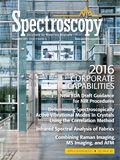Article
Spectroscopy
Spectroscopy
Ondax, Inc.
Company Description
Ondax, Inc. is the leader in the high-performance, low-frequency/THz-Raman® Spectroscopy systems and wavelength-stabilized laser sources for a wide range of spectroscopy, industrial, scientific, defense, and life science applications. Ondax patented THz-Raman® spectroscopy systems combine chemical detection and structural analysis into one instrument. Fast, easy capture of the complete Raman spectrum including both Stokes and anti-Stokes low-frequency Raman signals down to ~5 cm-1, improves sensitivity and reliability for polymorph discrimination, crystallization and phase monitoring, semiconductor and 2D materials characterization, explosives forensics, and advanced materials analysis. Our SureLock™ and CleanLine™ Series single frequency lasers set the price-performance standard for Raman laser sources.

Chief Spectroscopic Techniques Supported
- Raman spectroscopy
Major Products/Services
- Low-Frequency THz-Raman® spectroscopy systems
- Wavelength stabilized and single frequency laser sources
- Ultra-narrowband notch filters, beamsplitters and ASE filters

Markets Served
- Pharmaceutical
- Materials science
- Defense and security
- Life science
- Academic
- Forensic science
- Geological
- Oil and gas
- Research and development
Facility
Ondax products are all U.S. manufactured at our Southern California headquarters in Monrovia, California, just 10 miles east of Pasadena and about 30 miles from the Los Angeles airport.

Ondax, Inc.
850 E. Duarte Road
Monrovia, CA 91016
TELEPHONE
(626)-357-9600
FAX
(626) 513-7494
E-MAILsales@ondax.com
WEB SITEwww.ondax.com
YEAR FOUNDED
2000

Newsletter
Get essential updates on the latest spectroscopy technologies, regulatory standards, and best practices—subscribe today to Spectroscopy.

